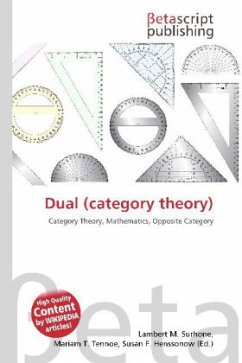
Duality (order theory)
Versandkostenfrei!
Versandfertig in 6-10 Tagen
23,99 €
inkl. MwSt.

PAYBACK Punkte
12 °P sammeln!
Please note that the content of this book primarily consists of articles available from Wikipedia or other free sources online. In the mathematical area of order theory, every partially ordered set P gives rise to a dual (or opposite) partially ordered set which is often denoted by Pop or Pd. This dual order Pop is defined to be the set with the inverse order, i.e. x y holds in Pop iff y x holds in P. It is easy to see that this construction, which can be depicted by flipping the Hasse diagram for P upside down, will indeed yield a partially ordered set. In a broader sense, two posets are also...
Please note that the content of this book primarily consists of articles available from Wikipedia or other free sources online. In the mathematical area of order theory, every partially ordered set P gives rise to a dual (or opposite) partially ordered set which is often denoted by Pop or Pd. This dual order Pop is defined to be the set with the inverse order, i.e. x y holds in Pop iff y x holds in P. It is easy to see that this construction, which can be depicted by flipping the Hasse diagram for P upside down, will indeed yield a partially ordered set. In a broader sense, two posets are also said to be duals if they are dually isomorphic, i.e. if one poset is order isomorphic to the dual of the other.












